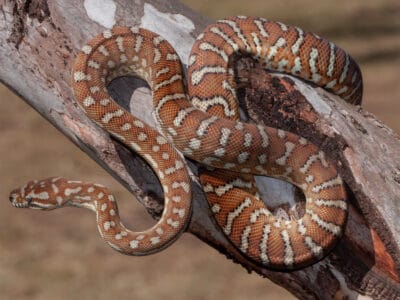Common Toad
.jumbotron {
background-image: url(“https://a-z-animals.com/media/animals/images/original/common_toad-400×300.jpg”);
}
}
@media only screen and (min-width: 641px) and (max-width: 920px) {
.jumbotron {
background-image: url(“https://a-z-animals.com/media/animals/images/original/common_toad-470×370.jpg”);
}
}
@media only screen and (min-width: 921px) {
.jumbotron {
background-image: url(“https://a-z-animals.com/media/animals/images/original/common_toad.jpg”);
}
}
Most active in wet weather!
Common Toad Scientific Classification
- Kingdom
- Animalia
- Phylum
- Chordata
- Class
- Amphibia
- Order
- Anura
- Family
- Bufonidae
- Genus
- Bufo
- Scientific Name
- Bufo Bufo
Read our Complete Guide to Classification of Animals.
Common Toad Conservation Status
Common Toad Facts
- Main Prey
- Insects, Worms, Spiders
- Distinctive Feature
- Rough skin and long, agile toes
- Habitat
- Forests, woodlands and marshes
- Predators
- Foxes, Grass Snakes, Hedgehogs
- Diet
- Carnivore
- Lifestyle
-
- Solitary
- Favorite Food
- Insects
- Type
- Amphibian
- Average Clutch Size
- 100
- Slogan
- Most active in wet weather!
This post may contain affiliate links to our partners like Chewy, Amazon, and others. Purchasing through these helps us further the A-Z Animals mission to educate about the world’s species..

Spiders that fly! Fish that walk! And 1000+ more incredible animals. Discover them all for FREE
.photo-gallery {
–margin: 0px auto 0px;
–padding: 0px 0px 0px 0px;
}
.gallery-link {
background-image: url(“https://a-z-animals.com/media/animals/images/original/common_toad7.jpg”);
background-repeat: no-repeat;
background-size: cover;
background-position: center;
height: 500px;
justify-content: center;
text-align: center;
align-items: center;
display: flex;
border: 2px solid #000;
}
.gallery-link img {
height: 50%;
}
@media only screen and (max-width: 768px) {
.gallery-link {
height: 300px !important;
}
}
View all of the Common Toad images!
Rush Hour Traffic Is The Biggest Threat To Common Toads
One of the most populous species of amphibians in Europe, common toads are small, four-legged animals that live in the water and on land.
Though millions of common toads waddle their way around Europe, the species is on the decline, and rush hour traffic is one of its biggest threats. Currently, they experience the highest rate of mortality among amphibians in Europe, and 20 tonnes of the animal are killed yearly during spring migration. Grassroots conservation teams across the continent have mobilized over the past two decades. These groups are making great strides in saving countless animals. Still, more public education is needed to thwart the diminishing numbers.
Top Toad Facts
Parasite Attacks: Common toads are vulnerable to several parasitic attacks by various animals, including fatal fly and worm attacks.
A Friend of Witches: In the Middle Ages, people associated toads with witches and the Devil, whose coat of arms featured three toads. The species was believed to have magical powers. If a toad was found in a house, people assumed that the residents of the home were associated with witches.
Literary Standard: Over the centuries, great English writers, like William Shakespeare, A.A. Milne, and George Orwell, famously referenced toads in their work. Milne even wrote an entire play about a toad lawyer named Mr. Toad, who lived on an estate named Toad Hall.
No Wart Worry: Common toads have lumps on their skin. People often refer to them as “warts.” Though their bumps resemble warts, they’re not communicable, and you won’t grow warts if you handle the animal.
Dead Skin Meals: Common toads occasionally shed their skin. Instead of leaving the discarded epidermis on the ground, toads tidy up by eating it!
Clam Transporter: Fingernail clams use toads as transporters. The small mollusks cling to the toads’ toes and use the amphibian to carry them to different locations.
Scientific Name
Common toads are also known as “European toads.” Their scientific name is Bufo bufo. Bufo is a Latin word that means “toad,” but some linguists think the word has older language roots. Osco-Umbrian languages pre-date Latin and were spoken in Central and Southern Italy. Researchers now believe that bufo is a borrowed root word that means “sliminess” and stems from these ancient tongues. However, the characterization is a bit of a misnomer because toad skin is dry.
Appearance & Behavior
What do Toads Look Like? How Much Does a Common Toad Weigh?
On average, common toads are about 10 to 18 centimeters (4 to 7 inches) long. How much does a common toad weigh? The species usually weighs between 20 and 80 grams (0.7 and 2.8 ounces). In other words, the biggest European toads only weigh half as much as a baseball! Southern toads are typically larger than their northern counterparts, and females are usually bigger than males.
Coloring for individual animals varies between grey-brown and olive-brown; males are usually browner than females. Both sexes of the species have dirty white underbellies with grey and black splotches. All toads sport wart-like lumps, and their skin is dry.
Toads have slightly protruding snouts with mouths and two-nostrils. They don’t have teeth or necks, but they do have bulging, bulbous eyes with yellow or copper irises and horizontal stilted pupils. Behind each eye is a gland filled with a substance known as “bufotoxin” or “bufogin,” which is a noxious liquid that toads excrete when they sense a predator or feel threatened. When attacked, common toads can also inflate their bodies, raise high on their legs and lower their heads to form a defensive stance.
Common toads are often confused with natterjack toads and European green toads. However, natterjacks have a yellow stripe that runs along the lengths of their backs, and green toads have a distinct pattern that differentiates them from common toads.
Toad Behavior
Toads prefer to be alone, but they do congregate for mating season. As nocturnal animals, common toads wake at dusk and spend the evenings hunting for food. At sunrise, they return to their lairs and sleep the day away.
A toad’s year consists of three stages: sleeping, mating, and eating.
In winter, they burrow away and enjoy a winter sleep. Different than hibernation, winter sleeps don’t result in the animal’s bodily functions slowing to a point where they don’t wake for months. Sometimes, on milder winter days, you can find a common toad out foraging for food, though it’s rare.
During the winter sleep period, toads find long-term slumber spots in basements, under mud composts, and around dead wood. Some dig ground holes near other amphibians.
They wake in the spring and start migrating to their ancestral breeding grounds, which can be miles away. To travel, the weather needs to be above 5 degrees Celsius (41 degrees Fahrenheit). In the autumn, toads spend their time filling up on food.
Commons toads have four legs, which they use to get around. The majority of the time, toads get from place to place by walking. It’s a clumsy walk, but they can reach speeds of up to 8 kilometers (5 miles) per hour. Occasionally, they’ll intersperse their walking with short, awkward hops.
Toads use vocalizations for various reasons. In the amphibian symphony, they are responsible for the high-pitched “qwark-qwark-qwark” calls. Toads settle disputes mainly through croaking, and the tenor of its croak is an indication of its size. The bigger the toad, the deeper the “qwark.”
Habitats: Where Do Common Toads Live?
As their name indicates, European toads live all over Europe, except in Ireland, Iceland, and some parts of Scandinavia. Their eastern range limit is Irkutsk, Siberia; their southern range limit is a series of mountain ranges spanning through Morocco, Algeria, and Tunisia. They are also found on certain Mediterranean islands, including Malta, Crete, Corsica, Sardinia, and the Balearic Islands. Scientists have also discovered small populations in northern parts of Asia.
Where do common toads live? Primarily, they like to live in high-foliage areas, like forests, woodlands, open countryside, fields, parks, and gardens. During their daytime slumbers, they burrow in lairs under leaves, roots, and stones. Common toads can be difficult to spot as they usually find places where they blend into the natural surroundings. For example, a grey toad may prefer to sleep near stones because their skin acts as a natural camouflage.
Common Toad Diet
Common toads don’t weigh much, but they’re voracious eaters. They mainly dine on invertebrates — animals without a backbone — including woodlice, slugs, caterpillars, flies, earthworms, and beetles. Sometimes, they eat small mice. Since toads don’t have teeth, they gulp their meals whole. Additionally, to aid in hunting, common toads have a sticky substance on their tongues to trap prey.
Toads must be careful about their beetle selection, though. Bombardier beetles — also known as “the farting bug” — secrete a poisonous liquid after being swallowed. According to studies, the substance makes toads sick, and most vomit up the beetles within 12 to 107 minutes of digesting. Amazingly, most of the regurgitated bombardiers are still alive when they exit the toad’s body!
European Toad Predators & Threats
Common toads are equipped with natural toxins — “bufotxin” and “bufogin” — which they secrete when threatened or provoked. This goes a long way in warding off animals who see them as a meal. However, it’s not a foolproof biological system. For example, grass snakes are unaffected by the substances and swallow toads whole without issue.
Hedgehogs, rats, minks, snakes, herons, crows, raptors, and domestic cats are natural predators of common toads. To avoid toads’ defense toxins, birds poke holes in the amphibian with their beaks and peck out the livers. Blow flies also present a big threat to European toads. A parasitic predator, blow flies lay eggs on toads’ skin. When the eggs hatch, the larvae crawl into the toads’ nostrils and eat their flesh internally, resulting in death.
Young toads are sometimes attacked by worms that slow their growth and cause anorexia. Dragonfly larvae, diving beetles, and water boatmen also feed on tadpoles.
Climate change is a significant threat to common toads as well. Since troublesome weather patterns are causing other animals, like otters and frogs, to seek higher ground, toads now have more competition for food, and they’re not winning the resources fight.
Other human-related threats to common toads include:
- Drainage of breeding wetlands;
- Agricultural activities that disrupt habitats;
- Pollution; and
- Road mortality.
European Toad Reproduction, Babies, and Lifespan
Mating and Breeding
Using smell and orientation cues, common toads return to the ponds in which they were born to mate and breed. In the early spring, males grow “nuptial pads” on their fingers. When a boy toad finds a girl toad with whom to mate, he mounts her back, wraps his front legs around her armpits, and uses the pads to grasp on tightly. Males can stay in this position for several days as they fertilize the female.
Once females are fertilized, they lay strings of eggs that look like black pearls. These strings can contain between 3,000 to 6,000 eggs and reach 3 to 4.5 meters (10 to 15 feet) long. Water seeps into the eggs, and within two to three weeks, depending on the weather, tadpoles hatch. Parents typically don’t stick around to nurture their spawn, but the hatchlings sometimes form shoals, which are large groups of swimming fish.
Generally speaking, common toads prefer to breed in deeper water, like fish ponds, village ponds, and reservoirs. In recent years, males have been arriving earlier at breeding grounds because the weather is getting warmer sooner. Females often take a year off between mating seasons.
Babies
Baby common toads are called “tadpoles.” When they hatch, they cling to the jelly of the egg strings and feed on it for nutrition. After a few days, they move onto the undersides of water leaves and eventually start swimming. In the first several weeks of life, they grow legs, and their bodies reabsorb their tails. After about 12 weeks, the tadpoles — which are usually black colored with grey bellies — make the transition to toadlets. At this point, they measure about 1.5 centimeters (0.6 inches) and leave the pond to start foraging for insects.
Common toads reach maturity between 3 and 7 years old, depending on their location and other external forces.
Lifespan
In the wild, common toads live between 10 and 12 years. In captivity, they can live up to 50 years! Females of the species have higher mortality rates than their male counterparts.
As they age, European toads are vulnerable to several common bacterial and viral diseases, including red leg syndrome, flavobacteriosis, mycobacteriosis, chlamydiosis, and ranavirus.
Common Toad Population
Though common toads are the fourth most common amphibian in Europe and fall under the ICUN’s “Least Concerned” category, their numbers are rapidly declining. The population has decreased by more than two-thirds since the 1980s. In Spain, due to increased aridity, conservationists consider common toads to be “near threatened.” The United Kingdom Biodiversity Action Plan lists them as a priority species.
Why are toad numbers plummeting? Several factors are contributing to the decrease. The main problem is habitat fragmentation because of urban sprawl and increased traffic. Since toads travel back to the ponds in which they were born, they must cross busy motorways to get there, which leads to high amounts of road mortality.
The good news is that an active grassroots movement has developed over the past several years to help toads cross roads safely. Commonly known as “toad patrols,” thousands of volunteers in the United Kingdom and across Europe engage in a variety of toad protection activities during the spring migration. Toad patrols devise ways to get animals across busy streets safely. Some collect them in buckets, and others carry them one by one. At the busiest intersections, local councils and volunteers post toad crossing signs. According to some estimates, toad patrols save up to 800,000 animals annually.
Though many people may casually call a group of toads a “clutch,” the proper term is “knot.”
View all 157 animals that start with C
Common Toad FAQs (Frequently Asked Questions)
Is the Common Toad Poisonous?
Is the common toad poisonous? They can be.
Common toads store bufotoxin and bufogin, two harmful substances, in their glands and skin. They secrete the liquids when threatened or provoked. Technically, a single toad has enough of these substances to cause death to certain animals and even humans in very rare cases. Scientists have yet to develop an anti-venom. Healthy people can usually handle common toads without fear of infection; however, it’s wise to keep the family dog and cat away from the amphibians.
Are Toads and Frogs the Same?
Are toads and frogs the same animal? To answer this question, scientists use a common saying: all toads are frogs, but not all frogs are toads. How can you spot the difference?
- Frogs have longer legs than toads.
- Frogs have smooth, damp skin; toads have lumpy, dry skin.
- Frogs prefer to leap to get around; toads usually walk.
- Toads spend less time in the water than frogs and breed a bit later on in the year.
- If you look at both a frog and a toad head-on, the former will look like it’s smiling, and the latter will appear to be frowning.
- Toads can tolerate drier conditions than frogs.
Are Common Toads herbivores, carnivores, or omnivores?
Common Toads are Carnivores, meaning they eat other animals.
What Kingdom do Common Toads belong to?
Common Toads belong to the Kingdom Animalia.
What phylum do Common Toads belong to?
Common Toads belong to the phylum Chordata.
What class do Common Toads belong to?
Common Toads belong to the class Amphibia.
What family do Common Toads belong to?
Common Toads belong to the family Bufonidae.
What order do Common Toads belong to?
Common Toads belong to the order Anura.
What genus do Common Toads belong to?
Common Toads belong to the genus Bufo.
What type of covering do Common Toads have?
Common Toads are covered in Permeable skin.
In what type of habitat do Common Toads live?
Common Toads live in forests, woodlands, and marshes.
What is the main prey for Common Toads?
Common Toads prey on insects, worms, and spiders.
What are some distinguishing features of Common Toads?
Common Toads have rough skin and long, agile toes.
What are some predators of Common Toads?
Predators of Common Toads include foxes, grass snakes, and hedgehogs.
What is the average clutch size of a Common Toad?
Common Toads typically lay 100 eggs.
What is an interesting fact about Common Toads?
Common Toads are most active in wet weather!
What is the scientific name for the Common Toad?
The scientific name for the Common Toad is Bufo Bufo.
What is the lifespan of a Common Toad?
Common Toads can live for 2 to 4 years.
How fast is a Common Toad?
A Common Toad can travel at speeds of up to 5 miles per hour.
How do Common Toads have babies?
Common Toads lay eggs.
How long do toads live?
The average toad lifespan is 10-15 years in the wild, depending on the species. However, in captivity, toads have been known to live up to 50 years.
How to say Common Toad in …
Gripau comú
Ropucha obecná
Erdkröte
Common Toad
Sapo común
Crapaud commun
Rupikonna
קרפדה מצויה
Barna varangy
Vanlig padde
Ropucha szara
Bufo bufo
Vanlig padda
Sources
- David Burnie, Dorling Kindersley (2011) Animal, The Definitive Visual Guide To The World’s Wildlife
- Tom Jackson, Lorenz Books (2007) The World Encyclopedia Of Animals
- David Burnie, Kingfisher (2011) The Kingfisher Animal Encyclopedia
- Richard Mackay, University of California Press (2009) The Atlas Of Endangered Species
- David Burnie, Dorling Kindersley (2008) Illustrated Encyclopedia Of Animals
- Dorling Kindersley (2006) Dorling Kindersley Encyclopedia Of Animals
















